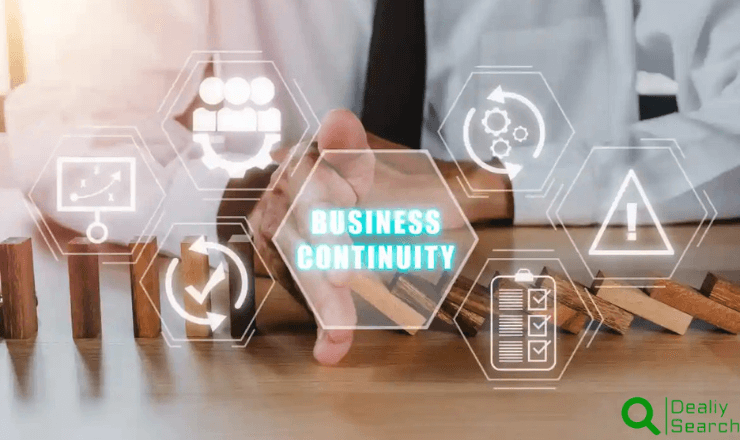The Ultimate Guide to Gathering Customer Feedback: Strategies for Success

Gathering customer feedback is crucial for the success and growth of your company as a business owner or entrepreneur. Customer feedback provides valuable insights into your customers’ satisfaction levels, preferences, and areas for improvement. By actively seeking and analyzing customer feedback, you can make informed decisions that drive your business forward. In this comprehensive guide, I will walk you through the strategies and best practices for gathering customer feedback effectively.
The Importance of Gathering Customer Feedback

Gathering customer feedback is essential for several reasons. First, it helps you understand your customers’ needs and expectations more deeply. By collecting feedback, you gain insights into what is working well and what needs improvement in your products or services. This understanding helps you tailor your offerings to meet customer demands better, ensuring higher customer satisfaction and loyalty.
Secondly, customer feedback provides valuable insights into your customers’ experience with your brand. It reveals their pain points, frustrations, and areas where they excel. Addressing these pain points can enhance the overall customer experience and establish a positive reputation for your business.
Furthermore, gathering customer feedback helps you identify trends and patterns within your target market. By analyzing the feedback data, you can uncover emerging needs or preferences, allowing you to stay ahead of your competitors. Ultimately, this knowledge enables you to make data-driven decisions that drive business growth.
Benefits of Gathering Customer Feedback

Gathering customer feedback has numerous benefits. First, it helps you build stronger relationships with your customers. When customers feel heard and valued, they are likelier to become loyal advocates for your brand. By actively seeking their feedback, you demonstrate that you genuinely care about their opinions and are committed to delivering exceptional experiences.
Secondly, customer feedback provides you with a competitive advantage. By listening to your customers, you can identify where your competitors fall short and capitalize on these opportunities. By continuously improving based on customer feedback, you position yourself as a customer-centric brand that consistently delivers value.
Additionally, gathering customer feedback allows you to make data-driven decisions. Rather than relying on assumptions or guesswork, you have accurate customer insights to guide your business strategies. This data-driven approach minimizes the risk of making costly mistakes and increases the likelihood of success.
Types of Customer Feedback
There are various types of customer feedback that you can gather to gain a comprehensive understanding of your customers’ needs and experiences. The most common types of customer feedback include:
- Survey feedback: This type of feedback is collected through surveys, which can be delivered via email, online forms, or in person. Surveys allow you to gather quantitative and qualitative data, providing a holistic view of customer sentiment.
- Social media feedback: With the rise of social media platforms, customers often share their opinions and experiences online. Monitoring social media channels lets you capture real-time feedback and engage with customers directly.
- Reviews and testimonials: Reviews and testimonials provide valuable feedback from customers who have already experienced your products or services. These insights help you understand the strengths and weaknesses of your offerings, enabling you to make necessary improvements.
- Support interactions: Customer support interactions, whether through phone calls, live chat, or email, can offer valuable feedback. Analyzing these interactions helps you identify recurring issues and areas for improvement in your customer service processes.
- User behaviour data: User behaviour data, such as website analytics and app usage data, provides insights into how customers interact with your digital platforms. Analyzing this data lets you identify usability issues and optimize your digital experiences.
Methods for Gathering Customer Feedback

To gather customer feedback effectively, you must employ various methods aligning with your target audience and business objectives. Some commonly used methods for gathering customer feedback include:
- Surveys: Surveys are a versatile and effective method for gathering customer feedback. To collect quantitative and qualitative data, you can create online surveys containing multiple-choice questions, rating scales, and open-ended questions.
- Focus groups: Focus groups involve gathering a small group of customers to discuss their experiences and opinions in a structured setting. This method allows for in-depth conversations and enables you to uncover detailed insights. One-on-one interviews: Conducting one-on-one interviews with select customers allows one to delve deeper into their experiences and perspectives. These interviews allow for personalized conversations and provide rich qualitative feedback.
- Feedback forms: Feedback forms can be placed at physical locations or integrated into your website or app. These forms typically consist of a few simple questions that customers can quickly answer, making it easy for them to provide feedback.
- Online review platforms: Monitoring online review platforms, such as Yelp or Google Reviews, enables you to capture customer feedback and respond to reviews promptly. This method allows for public engagement and showcases your commitment to customer satisfaction.
Creating Effective Customer Feedback Surveys
To ensure the effectiveness of customer feedback surveys, it is crucial to design them carefully. Here are some essential considerations when creating surveys:
- Keep it concise: Customers are more likely to complete surveys if they are short and focused. Keep your survey questions concise and avoid unnecessary repetition.
- Use a mix of question types: Incorporate a mix of multiple-choice, rating scale, and open-ended questions to gather quantitative and qualitative data. This variety lets you capture specific feedback while encouraging customers to provide more detailed insights.
- Ensure unambiguous questions: Make sure your survey questions are easy to understand and free from ambiguity. Ambiguous questions can lead to accurate responses.
- Offer incentives: Consider offering incentives such as discounts or freebies to encourage participation. Incentives can increase the response rate and provide a positive experience for your customers.
Analyzing and Interpreting Customer Feedback Data
Once you have gathered customer feedback, analyzing and interpreting the data is essential. Here are some steps to follow:
- Organize the data: Ensure the feedback data is easily accessible. Use spreadsheets or specialized software to manage and categorize the data.
- Identify trends and patterns: Look for common themes, sentiments, or patterns within the feedback data. Group similar feedback together to identify areas of strength or improvement.
- Quantify the data: Assign numerical values to qualitative feedback to quantify sentiment. This allows you to track changes over time and compare feedback across different segments.
- Prioritize action items: Identify the most critical areas for improvement based on the feedback data. Prioritize action items that will have the most significant impact on customer satisfaction and business success.
Implementing Changes Based on Customer Feedback
Gathering customer feedback is only valuable if you take action based on the insights gained. Here are some steps to effectively implement changes:
- Set clear goals: Define goals and objectives for the changes you want to implement. This ensures that your actions are aligned with your business strategy and customer needs.
- Develop an action plan: Create a detailed plan outlining the steps to implement the changes. Assign responsibilities and set deadlines to ensure accountability.
- Please communicate with your customers: Inform them about your changes based on their feedback. This not only shows transparency but also demonstrates that you value their opinions.
- Monitor and measure the impact: Continuously monitor the impact of your implemented changes. Use customer feedback and other metrics to assess whether the desired outcomes are being achieved.
Best Practices for Gathering Customer Feedback
To maximize the effectiveness of your customer feedback initiatives, consider the following best practices:
- Be proactive: Actively seek feedback from your customers rather than waiting for them to come to you. This can be done through regular surveys, feedback forms, or even personalized follow-up emails.
- Provide multiple feedback channels: Offer various channels for customers to provide feedback, such as email, phone, social media, or in-person. This accommodates different preferences and increases response rates.
- Respond promptly: Acknowledge and respond to customer feedback promptly, whether it is positive or negative. This shows that you value their input and are committed to addressing their concerns.
- Segment your feedback: Analyze feedback data based on customer segments, such as demographics or purchase history. This allows you to gain insights specific to different customer groups and tailor your strategies accordingly.
Tools and Software for Gathering Customer Feedback
Several tools and software can assist you in gathering and managing customer feedback effectively. Here are some popular options:
- SurveyMonkey: SurveyMonkey is a widely used survey creation and data analysis platform. It offers a range of survey templates, customization options, and analytics features.
- Qualtrics: Qualtrics is a comprehensive feedback management platform with advanced survey capabilities and robust data analysis tools. It allows for in-depth insights and automation of feedback processes.
- Google Forms: Google Forms is a free and user-friendly tool for creating surveys and feedback forms. It integrates seamlessly with other Google products, making data management and analysis straightforward.
- Zendesk: Zendesk is a customer service software with features for collecting and managing customer feedback. It enables you to capture input from various channels and track customer interactions.
- UserTesting: UserTesting is a user research platform that allows you to gather feedback through remote usability testing. It provides video recordings and detailed insights into how users interact with your digital products.
Case Studies: Successful Examples of Gathering Customer Feedback
To illustrate the impact of gathering customer feedback, let’s explore a few successful case studies:
- Apple: Apple is known for its customer-centric approach, actively gathering feedback through various channels. By listening to customer needs, Apple consistently introduces innovative products and features that resonate with its target audience.
- Amazon: Amazon collects customer feedback through review systems and customer surveys. This feedback helps them optimize their product offerings and enhance the overall customer experience, resulting in high customer satisfaction and loyalty.
- Netflix: Netflix collects customer feedback through user behaviour data and ratings. They personalize recommendations by analyzing viewing habits and preferences, improving user satisfaction and retention.
- Starbucks: Starbucks listens to customer feedback through their mobile app, social media, and in-store feedback forms. This feedback helps them tailor their menu offerings, create personalized experiences, and maintain a loyal customer base.
How Can Businesses Effectively Gather and Utilize Customer Feedback?
To effectively gather and utilize customer feedback, businesses should follow these steps:
- Define your objectives: Clearly define your objectives for gathering customer feedback. Determine the specific insights you need and how they align with your business goals.
- Choose the proper methods: The most appropriate methods for gathering input based on your target audience and business context. Consider a mix of surveys, social media monitoring, and support interactions.
- Design effective surveys: Design concise, clear, and engaging surveys. Use a mix of question types and offer incentives to encourage participation.
- Analyze and interpret the data: Thoroughly analyze the feedback data to identify trends, patterns, and areas for improvement. Quantify qualitative feedback to track changes over time.
- Take action and implement changes: Develop an action plan based on the insights gained from customer feedback. Communicate the changes to your customers and continuously monitor the impact.
- Iterate and improve: Continuously gather and analyze customer feedback to iterate and improve upon the changes made. Implement a feedback loop to ensure sustained customer satisfaction.
Frequently Asked Questions (FAQs)
1. Why is customer feedback important for businesses?
Customer feedback helps businesses understand their customers’ needs, improve products and services, and enhance customer satisfaction and loyalty.
2. What are the best ways to collect customer feedback?
Some of the most effective methods include surveys, online reviews, social media listening, live chat, email feedback requests, and website feedback forms.
3. How can businesses encourage customers to provide feedback?
Businesses can offer incentives, use gamification techniques, send personalized requests, and follow up with customers to increase feedback participation.
4. How should businesses analyze customer feedback data?
Businesses should categorize feedback, use AI and automation tools, implement sentiment analysis, and identify trends and patterns to gain actionable insights.
5. How can customer feedback be turned into actionable strategies?
By prioritizing improvements based on feedback, refining products and services, addressing common complaints, and aligning business goals with customer expectations, businesses can enhance customer satisfaction and drive growth.
Conclusion
Gathering customer feedback is a vital practice for businesses of all sizes. You gain valuable insights into customers’ needs, preferences, and pain points by actively seeking and analyzing them. This understanding allows you to make data-driven decisions, improve customer satisfaction, and drive business growth.
Remember to be proactive in gathering feedback, provide multiple channels for customers to share their opinions, and respond promptly to their feedback. Use a mix of surveys, social media monitoring, and support interactions to capture a comprehensive view of customer sentiment. Leverage the power of tools and software to streamline the feedback collection and analysis process.






